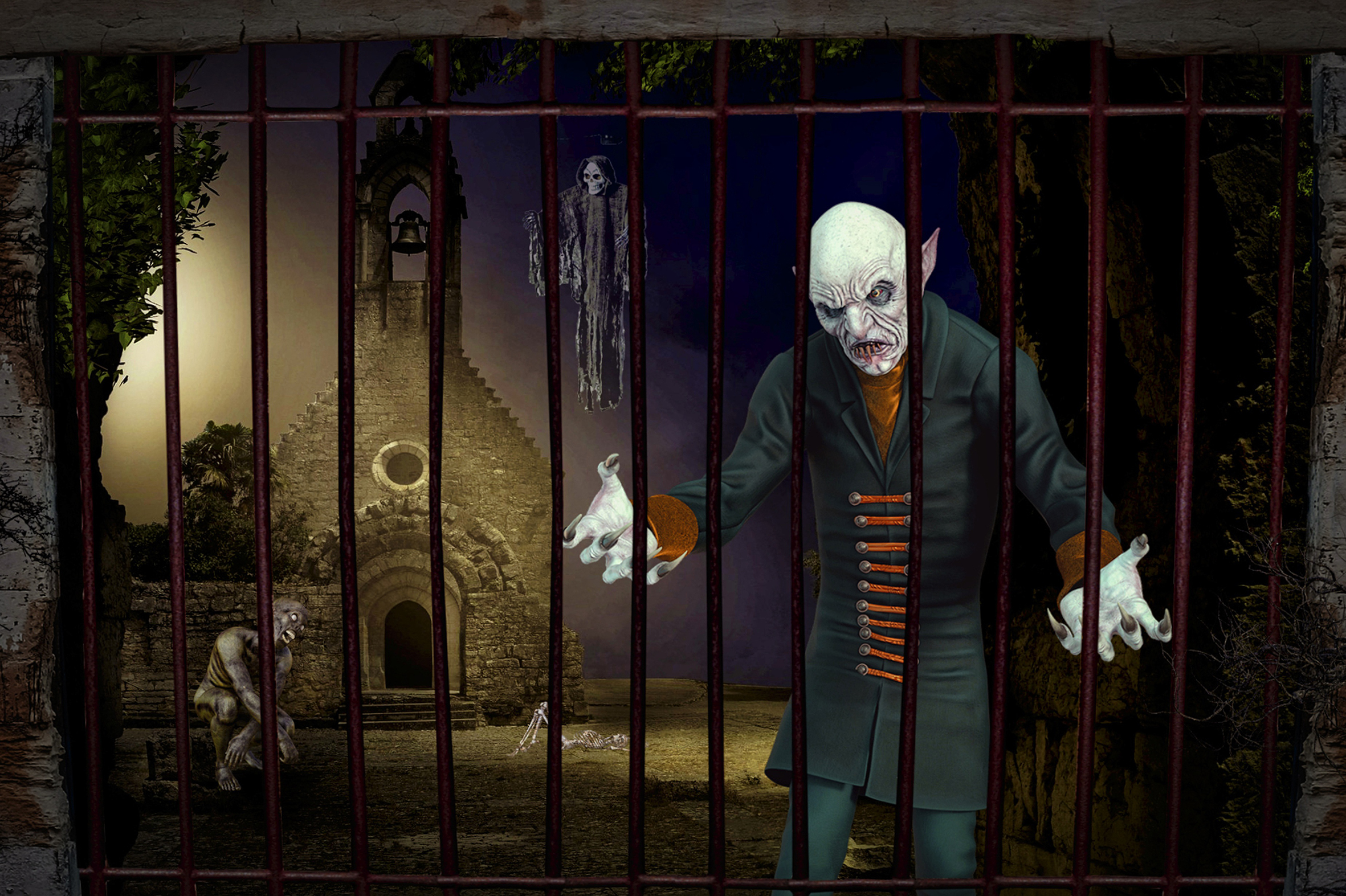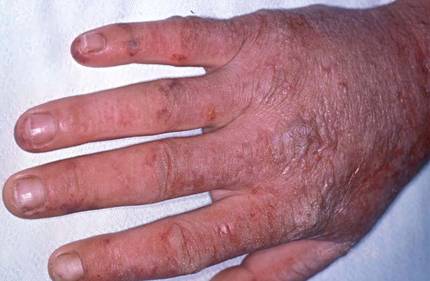The myth of vampirism in the light of science
2023/12/01 Leyre Echeazarra Escudero - EHUko Farmazia Fakultateko irakaslea eta ikertzailea. Fisiologia saila. Iturria: Elhuyar aldizkaria
“I found the vampire talking face-to-face. He was a man of indefinite age, weird face, skeletal, with extreme pallor. His eyes were sunken, reddened and filled with anger. When I approached her boring mouth, with the intent to bite, I saw that the teeth were as puncturing as nails. As I stretched my hands toward me, I saw his limbs. They were covered with wounds and scars, as were those caused by excessive exposure to sunlight.
I know that what I've seen today I can't forget it all my life. My mind doesn't recognize that I've found a supernatural being. Maybe, after all, it’s just someone who’s sick.”

As you know, myths are stories that people have invented to explain the world. The vampirism myth is as old as humanity. From 18th Century. Until the 20th century, vampires were considered to be extremely evil beings and fearful. When it was believed that a deceased became a vampire due to this terror, after a few days of the funeral the corpse was buried to confirm the suspicion. A stake was introduced into the body's chest to ensure his death. The pressure exerted by the stake in the lungs allowed a kind of “sighs” or screams. This made people think that the corpse was an active vampire and that the stake ended their life. However, that “sigh” was a flushing gas. This practice was dangerous because of the organic breakdown of the body and bacteria.
According to folklore, vampires resemble ordinary people with special characteristics: extreme paleness, long and sharp teeth, hair on hands and long nails. They cannot be reflected in mirrors and sleep during the day hidden in the light that can kill and wake up at night to feed on blood.
Can there be something real behind vampirism stories? Is there a physiological or medical basis for explaining what has historically been interpreted as vampirism? Behind the myth can be found different pathological situations of the human body. Since they were not understood, some diseases such as porphyria could have been misinterpreted.
Porphyria behind the vampirism myth
In fact, porphyria was a disease that existed long before being considered as such. Therefore, it could be considered evidence of the existence of demons or spirits. In fact, the first documented case of porphyria dates back to 1874, 26 years before the Gothic novel Dracula by Irish Bram Stoker.
David H. The scientist Dolphin first proposed the theory that an erroneous interpretation of porphyria could provoke the myth of vampirism. Dolphin, biochemist at the University of British Columbia in Vancouver, held a conference in 1985 at the American Association for the Advancement of Science, “Porphyria, vampires and werewolf men: Under the title “Etiology of the European Legends of Metamorphosis”. He suggested that porphyrias could grotestically deform patients, turn them into nocturnal beings and suck the blood of other human beings. So he proposed giving a scientific explanation to the vampirism myth. His idea was published in the New York Times newspaper and had a great media impact, although he then had several agents opposed to his theory, as he has not fully explained the characteristics of vampires.
Porphyrias are a set of metabolic alterations that affect hemoglobin synthesis. Specifically, there is an error in the biosynthesis of the hemoglobin group, which is responsible for the transport of oxygen in our blood. It's the one that gives red color to the blood.
Hemo group biosynthesis is a complex 8-step process with eight specific enzymes involved. When one of these enzymes fails, porphyrins build up in tissues such as skin, blood, bones and teeth. As a result there are some symptoms, signs and complications. Depending on the type of enzyme that fails, a certain type of porphyria occurs.
There are two subtypes of porphyria with the same characteristics as those described in the vampire and that may be related to the origin of the myth. The first is Günther's congenital erythropoietic porphyria, known as vampire disease. It is caused by a deficiency of the uropophytogenic enzyme synthase. The second is erythropoietic protoporphyria due to decreased ferrochelatase enzyme.
Characteristics shared by patients with porphyria and vampires
Although folklore has attributed varying characteristics to vampires, the similarity between vampires and patients with porphyria seems evident.
Two main and related characteristics are extreme paleness and the need for blood. Defects in the generation of hemoglobin produce anemia, which causes general pallor, as described in the classic figure of the vampire. One of the typical treatments for anemia are blood transfusions, which improve anemia and stop porphyrin production. In the past, medical therapy for anemia consisted of drinking blood from other animals. However, today we know that digestive juices destroy and, in order to absorb a small part of the blood group, the patient should drink a lot of blood. This custom is attributed to vampires. On the other hand, the XVII. In the twentieth century the importance of blood in human physiology was known and its lack becomes mortal. Therefore, it was not illogical to think that drinking blood could return to life or stretch. This stimulated the vampirism myth. In addition, in patients with porphyria, the urine is usually red or reddish brown due to the abundance of porphyrins in the urine. As if they had drank blood a liter!
Another feature is photosensitivity or intolerance to sunlight. Porphyrins that accumulate in the skin can absorb light of any wavelength from both the UV and the visible spectrum and transfer energy to oxygen. This causes free radicals, very reactive chemical species, which when they are brought to light, oxidize and damage tissues. Therefore, porphyria patients often sustain lesions in areas exposed to light, such as face and hands. At first the skin gets very red, it cracks and stays in the blood. Subsequently, easily infectable blisters are produced, causing wear and sores. As they heal, they leave marks and deformations in the affected areas. Auricular cartilage is also an area that can be affected, giving the ears a rigorous look, as has been shown more than once to vampires. This hypersensitivity to sunlight advises to avoid sun exposure, which can lead to night out, as vampires do.

It is also common to describe vampires as beings that cannot be reflected in mirrors. This belief could also derive from the light sensitivity of patients with porphyria. Ancient traditions and legends ensured that light, in any form, pierced the ethereal solidity of vampires (according to medieval folklore, vampires were translucent). So the most effective way to know if someone was a vampire was to put him in the light of a candle. If due to a strange optical effect light was not reflected on its surface, then the subject was considered a vampire. In addition, while caring for the deceased since the Middle Ages, it was customary to cover or remove mirrors in the room where the corpse was. If the body was reflected, death in the family was thought to be tragic and inevitable. Vampires were considered soulless, so they should not be reflected in mirrors to avoid tragic events.
Some patients with porphyria develop hypertrichosis (or abnormal hair growth) in areas exposed to light, such as the face and extremities. Sometimes hair grows in unusual places like palms, as described by Bram Stoker in the case of Count Dracula. Hair growth seems to be a protective mechanism of the body to respond to damage caused by light.
Bone damage from accumulated porphyrins in the bones is very noticeable. Severe loss of bone tissue causes deformations in the face and extremities. When they accumulate in the teeth, they deform and appear strictly. In addition, skin lesions of the face mentioned above may cause the lips to be very tense (or mutilated). So even though the teeth aren't larger than normal, they seem to be larger, they appear threatened. In addition, sometimes teeth are colored dark brown/reddish. This reminds us of the bloody mouths of vampires. The same can happen in the eyes, which can appear red and complications such as conjunctivitis and ectropium (condition in which the eyelid folds out).
In the vampirism myth, the victims of a vampire's bite become vampires. Porphyria is an inherited disease, specifically autosomal recessive. This means that the disease occurs when the child inherits a copy of a mutated gene from each parent, that is, from the mother and father. Thus, the siblings could share the defective gene that caused the disease. This could lead to the belief that the siblings could “awaken” this hidden disease when a vampire died (then the idea of infecting other people who were not siblings spread).
Finally, it is believed that vampires get rid of garlic. What relationship can this garlic intolerance have with porphyria? Garlic contains a chemical that increases the symptoms of porphyria: allyl disulfide. This substance causes the breakdown of the haemo group, which can increase the discomfort of patients with porphyria.
Despite the similarities, it should be noted that the theory of porphyria behind the vampirism myth does not explain some aspects. On the one hand, it is a very rare disease, so there are few cases. On the other hand, it is not contagious, so there can be no huge expansion and vampire epidemics. Another more acceptable explanation of the origin of vampire bite contamination is rabies. And that is that in Europe the 16th. and XVII. For centuries there were several epidemics of rabies, when the vampirism myth grew more. Rabies is a viral disease that can be taken in case of a bite from an infected animal. Rabies virus affects the animal brain, so symptoms cause behavioral changes; animals can be friendly, shy, or aggressive. As the disease progresses, symptoms worsen and cerebral dysfunction, anxiety, confusion and alteration appear. This would coincide with the barbarity of vampires by biting their victims.
Also, plague, another infectious disease caused by bacteria, may be behind the idea of vampire epidemics, an easily contagious disease. XIV. In the twentieth century, to avoid contagion, the plague victims were buried prematurely without attesting to clinical death. Sometimes patients buried themselves alive and suffered a long and terrible agony. When they tried to run away from the graves, they were wounded. As a result, when leaving the tomb, sometimes the body was preserved and found with blotting blood. This made them think they were vampires.
Myth or disease?
Analyzing the apparent relationship between porphyria and vampire folkloric elements, would it be possible for patients with porphyria in medieval Europe to feed myth amid ignorance and popular belief? Apart from any speculation, it is interesting to see how the vampirism myth has passed the test of time, still in the nightmares of many and starring numerous theatrical, literary and cinematographic works.
Bibliography
[1] Boffey PM.1985. “Rare disease proposed as cause for “vampire”. New York Times, 31 May 1985: A15.
[2] Cox AM. 1995.“Porphyria and vampirism: another myth in the making”. Postgraduate Med J. 71:643–644.
[3] of God Díaz-Rosales, J., and Romo, J. 2007.“Myths and science: Porphyria and vampirism.” Vol Mex His Fil Med, 10 (1): 44-46.
[4] Chavez, G. R. 2012. “Vampirism: dermatology. Cosmetic, Medical and Surgical Dermatology, 10(3), 223-225.
[5] Mr. Gómez Alonso. 1998.“Rabies: a possible explanation for the vampire legend”. Neurology. 51:856–9.
[6] Gottlieb RM. 1994 “The legend of the European vampire. Object loss and corporeal preservation”. Psychoanal Study Child; 49:465-80.
[7] Similar to Saval A, Morone-Tirado A. 1999. “Congenital erythropoietic porphyria affecting two brothers”. British Journal of Dermatology; 141: 547-550.
[8] Juan Gómez-Alonso. (1995) Vampires in the light of medicine. Neuropress.
[9] Lorenzo, C. B., de Diego, M. C. Aldehuelo, R. S. Alonso, C. V. & Tapia, A. G. 2014. “Porphyrias and vampirism.” More dermatology, 22, 16-21.
[10] Pineño, P. 2019. “Anatomy of a vampire.” Begina. https://principia.io/2019/06/03/anatomia-de-un-vampiro.IjkzOSI/
[11] https://aquimediosdecomunicacion.com/2022/05/05/cuando-padeces-una-enfermedad-rara-el-desconocimiento-lo-invade-todo/
[12] https://pixabay.com/pt/illustrations/vampiro-dem%C3%B4nio-esp%C3%ADrito-esqueleto-7321835/




